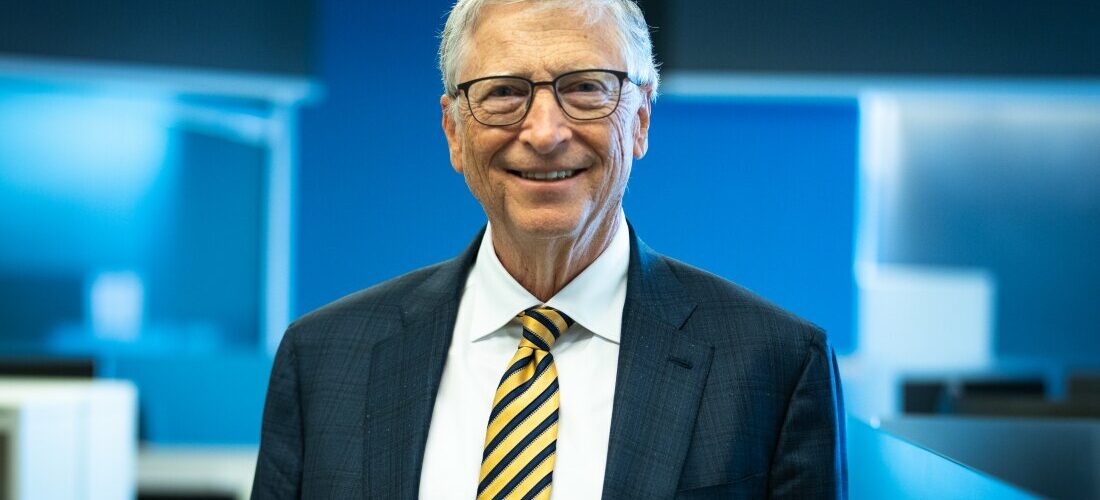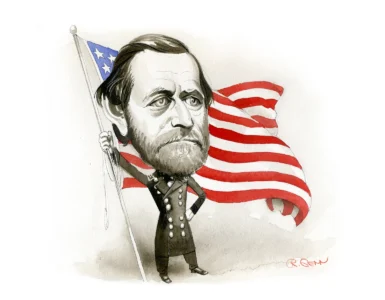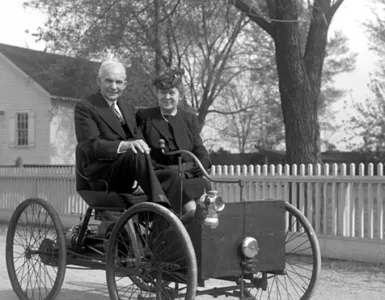Bill Gates is one of the most influential figures in technology and business. As the co-founder of Microsoft, he transformed personal computing. His role helped shape the digital age as we know it. Today, Gates is recognized not only for his success in technology but also for his extensive philanthropic efforts. He focuses on improving global health, education, and poverty. This article explores Gates’ journey from a young tech enthusiast to a billionaire entrepreneur and philanthropist, making a lasting impact on the world.
Bill Gates’ Early Life and Passion for Computers
William Henry Gates III, known as Bill Gates, was born on October 28, 1955, in Seattle, Washington. He grew up in a well-educated family. His father, William H. Gates Sr., was a successful attorney. Meanwhile, his mother, Mary Gates, was a schoolteacher and served on charitable boards.
Gates developed an interest in computers early on. At 13, he attended the Lakeside School, a private preparatory school. Here, he encountered computers for the first time. Gates and his classmates, including Paul Allen, became fascinated with the school’s computer terminal. They spent hours programming and learning about software.
While at Lakeside, Gates wrote his first computer program, a simple tic-tac-toe game. His passion for technology was evident. He often skipped classes to learn programming. Gates and Allen became close friends, sharing their love for technology. They began experimenting with software together.
Dropping Out of Harvard and Founding Microsoft
In 1973, Gates enrolled at Harvard University. Initially, he studied pre-law, but he quickly shifted towards mathematics and computer science. During his time at Harvard, he explored his passion for programming. He often worked late into the night on computer projects. However, his academic journey changed in 1975 when Paul Allen approached him with a groundbreaking idea: starting a software company.
That year, Gates and Allen founded Microsoft. The name came from “microcomputer software,” reflecting their goal of developing software for the emerging market of personal computers (PCs). Gates made the tough choice to drop out of Harvard. This decision allowed him to dedicate himself fully to building the new company. Ultimately, this leap of faith paid off, as Microsoft would revolutionize the computer industry.
The Rise of Microsoft and MS-DOS
In its early years, Microsoft developed software for various systems. However, their big break arrived in 1980. They struck a deal with IBM, which sought an operating system for its first PC. Microsoft licensed a system called MS-DOS (Microsoft Disk Operating System) to IBM. This quickly became the standard OS for PCs. This deal marked a turning point for Microsoft. MS-DOS gained popularity, providing the company with a strong foothold in the software market.
The Creation of Windows and Personal Computing Revolution
Despite MS-DOS’s success, its text-based interface was not user-friendly. Gates envisioned a more accessible way for people to interact with computers. This vision led to the development of Microsoft Windows. The first version of Windows released in 1985. It provided a graphical user interface (GUI) on top of MS-DOS, making computers easier for non-technical users.
Windows quickly gained traction. Its successive versions, including Windows 3.0 and Windows 95, transformed personal computing. The user-friendly interface combined with features like multitasking and the Start menu helped make Windows the dominant OS worldwide. By the mid-1990s, Microsoft had established itself as the leader in personal computing software. Consequently, Bill Gates became one of the richest individuals in the world.
Bill Gates’ Leadership and Microsoft’s Dominance
Under Gates’ leadership, Microsoft became a global powerhouse. He was known for his intense work ethic and business savvy. Gates worked tirelessly to keep Microsoft ahead of its competitors. His business acumen allowed the company to expand into various sectors. These included office productivity software, internet browsers, and gaming.
In 1989, Microsoft introduced Microsoft Office. This suite included essential productivity applications like Word, Excel, and PowerPoint. Office became vital for businesses and individuals, further cementing Microsoft’s dominance.
During this time, Microsoft faced challenges and controversies. One major issue was a landmark antitrust lawsuit by the U.S. Department of Justice in the late 1990s. The government accused Microsoft of using its monopoly power to stifle competition, particularly in the web browser market. The company bundled its Internet Explorer browser with Windows. The case concluded with a settlement in 2001, highlighting Microsoft’s significant influence in the tech sector.
Stepping Down from Microsoft and Philanthropic Ventures
By the early 2000s, Gates began shifting his focus from daily operations at Microsoft to philanthropy. In 2000, he stepped down as CEO and became Chief Software Architect. This role allowed him to concentrate on broader technological strategies. In 2006, he announced his transition to a part-time role at Microsoft. This change enabled him to devote more time to philanthropy.
Gates co-founded the Bill & Melinda Gates Foundation with his then-wife, Melinda Gates, in 2000. The foundation quickly grew into one of the largest private charitable organizations globally. Its mission focused on tackling pressing issues like global health, poverty, education, and access to technology. The foundation has significantly contributed to eradicating diseases like polio. It has improved access to vaccines, promoted sanitation, and advanced educational opportunities, especially in developing countries.
Through partnerships with organizations like the World Health Organization (WHO) and Gavi, the Vaccine Alliance, the foundation’s work in global health has saved millions of lives. It supports immunization programs and combats infectious diseases like malaria and HIV. Additionally, it improves maternal and child health.
The Giving Pledge and Philanthropy’s Future
Beyond his work with the Gates Foundation, Gates, along with billionaire investor Warren Buffett, launched the Giving Pledge in 2010. This initiative encourages the world’s wealthiest individuals to commit most of their wealth to charitable causes. They can do this either during their lifetimes or in their wills. This effort has inspired hundreds of billionaires to pledge significant portions of their fortunes to philanthropy.
Gates’ philanthropic approach mirrors the principles he applied in business. He emphasizes data-driven decision-making, scalable solutions, and partnerships with governments, businesses, and non-profits to tackle complex global problems.
Bill Gates’ Views on Technology, Innovation, and Society
Throughout his career, Gates has advocated for technology and innovation as tools for progress. He has written several books, including “The Road Ahead” (1995) and “Business @ the Speed of Thought” (1999). In these works, he discusses technology’s impact on business and society. Gates has also emerged as a thought leader in areas like artificial intelligence, climate change, and digital education.
In recent years, Gates has focused on global challenges like climate change and sustainable energy. In his 2021 book, “How to Avoid a Climate Disaster,” he outlines practical solutions to address the climate crisis. He emphasizes the need for innovation to achieve a zero-carbon future.
Bill Gates’ Personal Life and Legacy
Bill Gates has profoundly impacted both the tech industry and philanthropy. Known for his passion for learning and innovation, he is an avid reader. He has shared his recommended book lists and thoughts on various subjects through his blog, GatesNotes.
In 2021, Gates and Melinda announced their divorce after 27 years of marriage. However, they continue to work together at the Gates Foundation. Despite their separation, they remain committed to their shared vision of improving global health, education, and poverty.
Conclusion
Bill Gates’ life story showcases the power of innovation, entrepreneurship, and the drive to positively impact the world. As Microsoft’s co-founder, he transformed personal computing. He established one of the most successful technology companies in history. His journey from tech pioneer to global philanthropist has inspired millions. It demonstrates how wealth and influence can be harnessed to address pressing global issues.
Gates’ legacy is multi-dimensional. It encompasses his contributions to technology, business, and philanthropy. His work continues to influence the digital world, shape global health initiatives, and inspire a new generation of leaders dedicated to making the world a better place.





Add comment